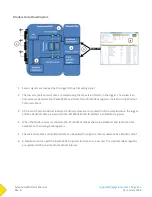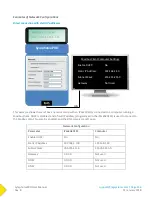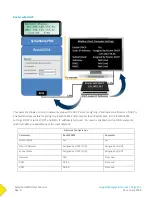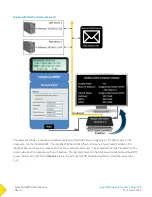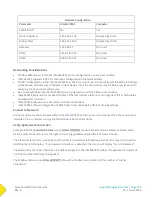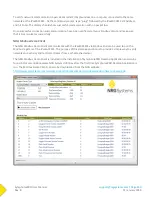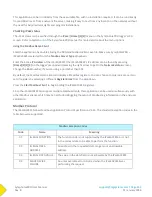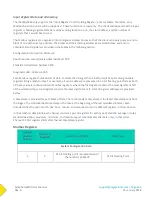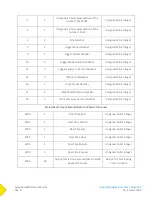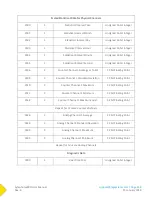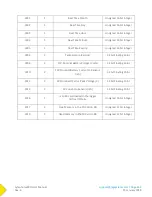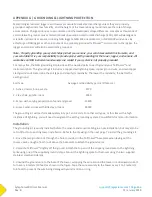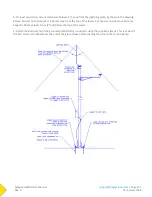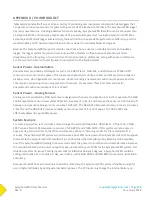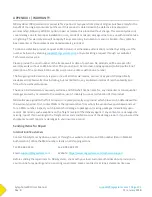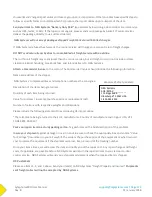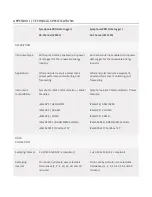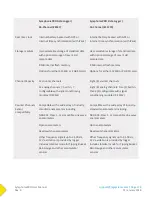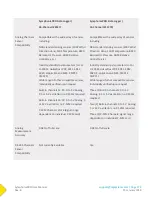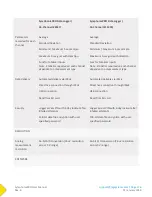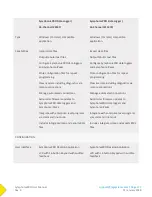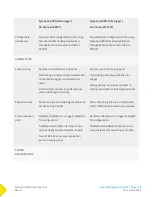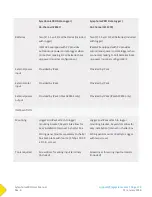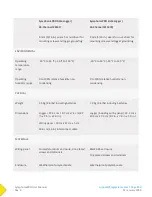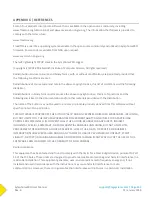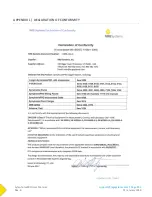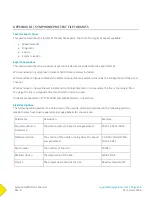
SymphoniePRO User Manual
Rev. 8
support@nrgsystems.com | Page 169
11 January 2018
APPENDIX H | POWER BUDGET
NRG Systems prides itself on our 30 year history of producing very low-power consumption data loggers that
can be left to run autonomously for years with just a small PV attached to the iPack. The SymphoniePRO logger
has many new features, including additional channel capacity. SymphoniePRO therefore uses more power than
a SymphoniePLUS3 and requires a higher output PV panel (sold separately). If using the SymphoniePRO like a
SymphoniePLUS3 (daily logger initated calls), there will not be an appreciable performance difference, and the
standard iPack and PV panel will provide autonomous power for latitudes below 45 degrees.
Because the SymphoniePRO supports remote conections where a user can remotely monitor and update a
logger, the logger system may spend more time with the modem on than previous Symphonie models
(depending on the frequency of such activity). This communcation preference, along with sensor preferences,
are the two main drivers of overall power consumption for the fielded system.
Sensor Power - Anemometers
Anemometers provided by NRG Systems such as the NRG Class 1, NRG 40C, and Windsensor P2546C-OPR
sensors do not consume any power. This is because these sensors utilize a robust and simple coil and magnet
pickup system, which generates its own power. Optical scanning anemometers will consume power, and this
consumption can add up when using several such sensors. For example, Thies First Class and Vector
anemometers will consume about 15.6 mW each.
Sensor Power – Analog Sensors
Analog sensors provided by NRG Systems are designed with power consumption in mind. For example, the NRG
110S temperature sensor draws under 200 micro-amperes of current, and because the sensor can be turned off
between one-second readings, it only consumes 0.05 mW. The NRG BP20 barometric pressure sensor consumes
2.9 mW, and the NRG RH5X relative humidity sensor consumes 31.2 mW of power. The NRG 200P vane
effectively draws no appreciable power.
System Example
For some perspective, let’s consider a meteorological tower outfitted with 4 NRG Class 1, 3 Thies FCA, 3 NRG
200P vanes, 2 NRG 110S temperature sensors, 1 NRG BP20 and 1 NRG RH5X. If this system were to come on
once per day, transmit data to the office and then stay online in “listening mode” for the remainder of 10
minutes, the SymphoniePRO system would consume about 20% more power than a SymphoniePLUS3 equipped
tower. Note the SymphoniePLUS3 would call in and download the data without any listening mode available,
and if the SymphoniePRO listening time were decreased, the power consumption would also decrease. Because
the standard NRG PV panel power output has been increased by over 100% for the SymphoniePRO system, this
situation presents no issues. Testing reveals that for lattitudes below 45 degrees, a SymphoniePRO could be
configured to make 12 such calls per day, even with an extra NRG RH5X and NRG BP20 connected and maintain
autonomy.
Because iPackGPS has extra terminals to add PV and battery, the SymphoniePRO system is flexible enough for
use in higher lattitudes by adding external battery power. The PV inputs only charge the internal battery, so
Summary of Contents for SymphoniePRO
Page 1: ......
Page 74: ...SymphoniePRO User Manual Rev 8 support nrgsystems com Page 74 11 January 2018 ...
Page 76: ...SymphoniePRO User Manual Rev 8 support nrgsystems com Page 76 11 January 2018 ...
Page 77: ...SymphoniePRO User Manual Rev 8 support nrgsystems com Page 77 11 January 2018 ...
Page 78: ...SymphoniePRO User Manual Rev 8 support nrgsystems com Page 78 11 January 2018 ...
Page 134: ...SymphoniePRO User Manual Rev 8 support nrgsystems com Page 134 11 January 2018 ...
Page 137: ...SymphoniePRO User Manual Rev 8 support nrgsystems com Page 137 11 January 2018 ...
Page 139: ...SymphoniePRO User Manual Rev 8 support nrgsystems com Page 139 11 January 2018 ...
Page 142: ...SymphoniePRO User Manual Rev 8 support nrgsystems com Page 142 11 January 2018 ...

